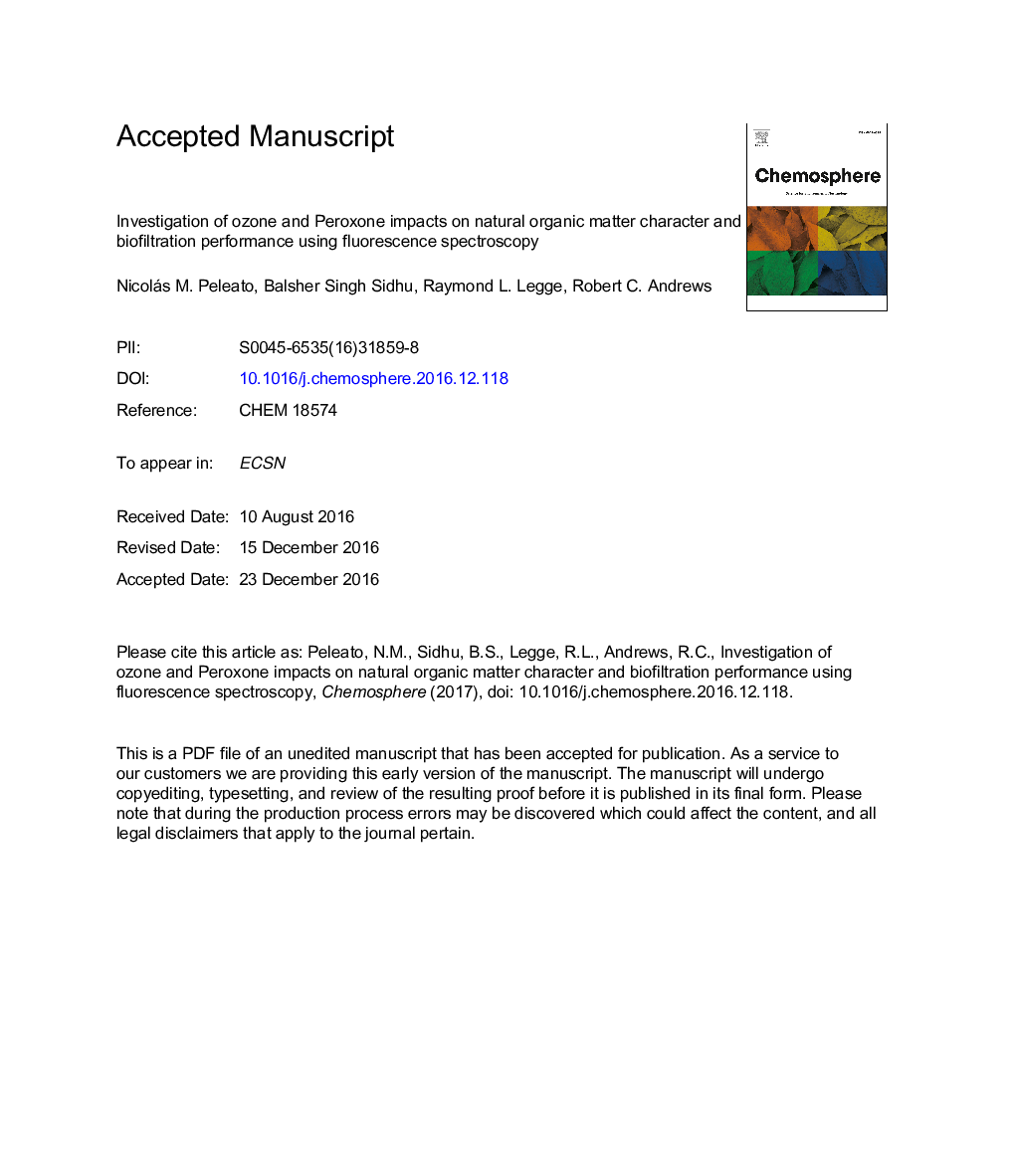| Article ID | Journal | Published Year | Pages | File Type |
|---|---|---|---|---|
| 5747103 | Chemosphere | 2017 | 35 Pages |
Abstract
Impacts of ozonation alone as well as an advanced oxidation process of ozone plus hydrogen peroxide (H2O2Â +Â O3) on organic matter prior to and following biofiltration were studied at pilot-scale. Three biofilters were operated in parallel to assess the effects of varying pre-treatment types and dosages. Conventionally treated water (coagulation/flocculation/sedimentation) was fed to one control biofilter, while the remaining two received water with varying applied doses of O3 or H2O2Â +Â O3. Changes in organic matter were characterized using parallel factors analysis (PARAFAC) and fluorescence peak shifts. Intensities of all PARAFAC components were reduced by pre-oxidation, however, individual humic-like components were observed to be impacted to varying degrees upon exposure to O3 or H2O2Â +Â O3. While the control biofilter uniformly reduced fluorescence of all PARAFAC components, three of the humic-like components were produced by biofiltration only when pre-oxidation was applied. A fluorescence red shift, which occurred with the application of O3 or H2O2Â +Â O3, was attributed to a relative increase in carbonyl-containing components based on previously reported results. A subsequent blue shift in fluorescence caused by biofiltration which received pre-oxidized water indicated that biological treatment readily utilized organics produced by pre-oxidation. The results provide an understanding as to the impacts of organic matter character and pre-oxidation on biofiltration efficiency for organic matter removal.
Keywords
Related Topics
Life Sciences
Environmental Science
Environmental Chemistry
Authors
Nicolás M. Peleato, Balsher Singh Sidhu, Raymond L. Legge, Robert C. Andrews,
